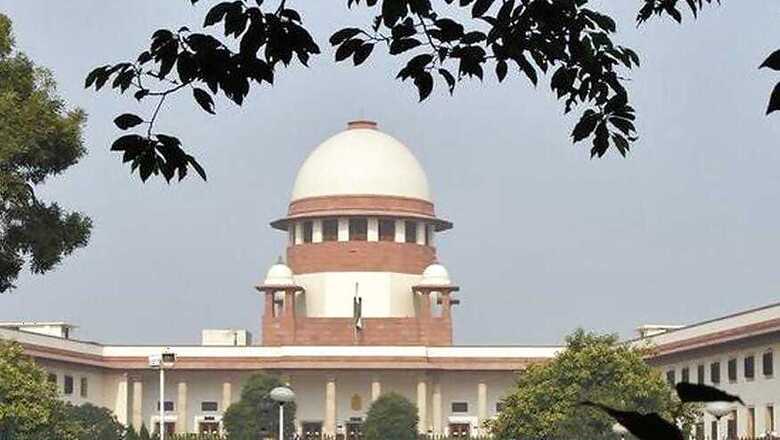
views
New Delhi: The "painful" state of women representation in the judiciary and the absence of “even a single notary” was highlighted in a report submitted by a standing committee on Personnel, Public Grievances, Law and Justice in the Rajya Sabha on Wednesday.
The 96th Report on Demands for Grants (2018-19) of the Ministry of Law and Justice was presented by a standing committee chaired by Bhupendra Yadav. Among various issues, the report noted the poor representation of women in the judiciary, the absence of notaries, huge pendency of cases, insufficient allocation of funds, and increasing vacancies in the position of law officers.
“Since Independence, only six women judges have been appointed in the Supreme Court of India. The first of whom was in 1989. The Committee, accordingly, desires that the Bench of Higher Judiciary be reflective of the composition of society and its diversity and recommends that suitable measures be taken to include more and more women judges in both Higher and Subordinate Judiciary,” reads the standing committee report.
The standing committee has now reiterated the recommendation it made in its 84th Report that the strength of women should be around 50 percent of the total strength of judges.
The report also revealed that 11 states and union territories did not have even a single notary. Notaries are perhaps the most commonly required legal service in daily life, considering their need for document verification and attestation.
“The Committee is, therefore, despondent to note that nationwide more than 5000 vacancies of Notaries exist under the central government quota. The data shows that 11 States/UTs do not have a single notary appointed and in most other States/UTs also, there are huge vacancies. However, the government is not taking any proactive measures to fill them,” read the report.
The committee blamed the government for “not advertising the vacancies” and observed that the “entire process of appointment of Notaries from application stage to issue of Certificate of Practice takes an inordinate time”. The standard period of appointment, from interview to selection, is a period of two to three years.
The standing committee also noted that the disproportionate allocation of budget to the Ministry of Law and Justice “indicates that either the projections of the Ministry/Commission were overestimated or they have received inadequate funds”.
“As per the data provided, the Ministry had projected a requirement of ₹ 6550.38 crores for BE 2018-19 to the Ministry of Finance, against which an allocation of only ₹ 4386.33 crores has been approved, which is just 67% of the allocation sought from the Ministry of Finance,” noted the report.
While commenting on vacancies in subordinate judiciary the committee said that among the 36% vacancy in law officers even the post of “of Solicitor General of India, who is second law officer of the country and assists the Attorney General of India, is vacant.”
The Committee further reported that a huge pendency of cases exists in the Subordinate Judiciary with the top five positions being taken up by Uttar Pradesh (61,61,822), Maharashtra (33,36,574), West Bengal (17,70,820), Bihar (16,58,292) and Gujarat (16,41,355).
This has been further corroborated by the vacancy of judges in High courts which the committee has pegged as “very high”. Currently, there are 56 vacancies in Allahabad High Court, followed by Karnataka (38), Calcutta (39), Punjab & Haryana (35), Telangana & Andhra Pradesh (30) and Bombay (24).




















Comments
0 comment